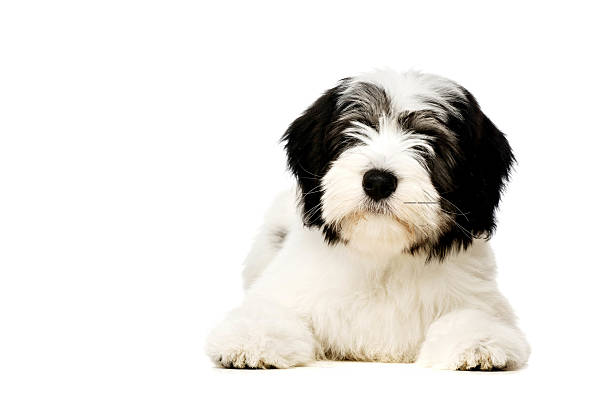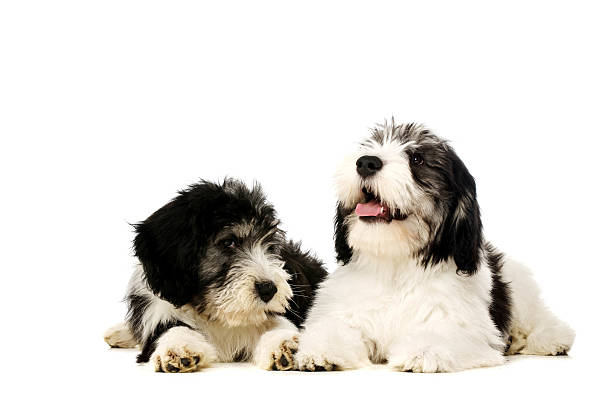Polish Lowland Sheepdog

Breed History:
The Polish Lowland Sheepdog, also known as the PON (Polski Owczarek Nizinny), is a herding breed that originated in Poland during the 13th century. It is believed to have descended from Hungarian Puli-type dogs crossed with long-coated European herding and guard breeds. PONs were prized by Polish shepherds for their intelligence, tenacity, and weather-resistant coat.
During World War II, the breed nearly disappeared but was revived in the 1950s through dedicated breeding efforts, particularly by Dr. Danuta Hryniewicz and her dog Smok. The Polish Lowland Sheepdog was recognised internationally in the late 20th century and remains popular in Europe and North America as both a herding dog and companion.
|
Gender |
Height |
Weight |
|
Male |
45-50 cm |
18-23 kg |
|
Female |
42-47 cm |
16-20 kg |
Size – Medium
Life Expectancy: 12–15 years

Breed Appearance:
The Polish Lowland Sheepdog is a compact, muscular, and balanced dog covered in a dense, shaggy double coat that often covers its eyes. The coat can be wavy or straight and comes in various colours, including white with black, grey, or brown markings, or solid shades with white.
It has a broad head, strong muzzle, and pendant ears. The breed’s tail may be naturally short, docked, or full-length, depending on country regulations. PONs move with lively, confident steps, reflecting their working roots.
Breed Type – Herding/Family:
Historically, a sheep and cattle herder, the PON remains a dedicated working dog with a watchful, confident, and loyal temperament. It is highly adaptable, forming strong bonds with its family and often displaying a protective nature.
While naturally reserved with strangers, the breed is not aggressive. Its even temperament and affectionate nature make it a devoted family pet, but it thrives in homes where it has tasks or structured activity.

Training:
The Polish Lowland Sheepdog is highly intelligent, independent, and observant. It learns quickly but can be strong-willed, requiring consistent, positive training with firm boundaries.
Socialisation is key to ensure it is well-mannered and confident. PONs excel in obedience, herding trials, agility, and tracking, and respond well to training that challenges their mind and rewards their efforts.
Health & Care:
This breed is generally healthy and long-lived, though some genetic issues can occur, including:
-
Hip dysplasia
-
Progressive retinal atrophy (PRA)
-
Hypothyroidism
-
Ear infections (due to floppy ears and dense coat)
Reputable breeders conduct health screenings, and regular veterinary care, a balanced diet, and appropriate exercise are essential to keep PONs in good shape.

Living Conditions:
The PON can adapt to urban or rural living, but it does best in homes where it has room to move and is not left alone for long periods. It is well-suited to families who are active and involved in the dog’s daily life.
This breed can live in apartments if given enough exercise and mental stimulation, but it thrives in homes with a yard or frequent access to outdoor space. It prefers cooler climates, thanks to its thick coat.
Exercise:
Moderately energetic, the Polish Lowland Sheepdog requires at least 1 hour of daily exercise, including walks, interactive play, and training activities. It is agile and athletic, enjoying agility courses and problem-solving games.
Without sufficient stimulation, PONs may become bored, bark excessively, or become destructive. Mental challenges are just as important as physical activity for this clever breed.
Grooming:
The PON's long, shaggy coat needs regular grooming to prevent tangling and mats. Brushing several times a week is recommended, with more frequent grooming during shedding seasons.
Though it sheds moderately, grooming is essential to keep the coat healthy and clean. Regular baths, nail trims, ear cleaning, and teeth brushing are part of its care routine. Some owners trim the coat shorter for easier maintenance.

Advantages:
-
Loyal and deeply bonded with its family
-
Intelligent and highly trainable in various dog sports
-
Versatile—can thrive in both working and companion roles
-
Low shedding compared to other long-haired breeds
-
Generally healthy with a long lifespan
-
Good watchdog with a calm, alert demeanour
Disadvantages:
-
Needs regular, thorough grooming to prevent matting
-
Can be headstrong or independent if not properly trained
-
Reserved with strangers; needs early socialisation
-
Prone to boredom if under-stimulated
-
Can be vocal if not taught boundaries
-
Not ideal for households without time for exercise and grooming

